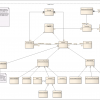 |
Why You Need Continuous Testing in DevOps DevOps is more than adopting the right set of tools; it's a cultural shift that incorporates testing at each stage of the agile project lifecycle. Continuous testing is key to unlocking this culture change because it weaves testing activities into every part of the software design, development, and deployment processes, which helps everyone involved communicate more, collaborate better, and innovate faster.
|
|
 |
Solving Production Issues Using Testing Tools Standard web-monitoring tools can ping webpages and verify that they’re responding, but they don’t alert you to an issue. But you can use the technology in load testing to monitor your sites by running an interactive script that can detect issues and generate emails as needed. It runs constantly like a silent sentry, never sleeping or taking a vacation, improving your sites' reliability.
|
|
 |
Designing a Valuable Stress Test If you're in a line of e-commerce that sometimes experiences site-crashing levels of volume, executing periodic stress tests is part of a good business plan. Nels Hoenig works for an electric company, so for his site, the main source of stress is power outages. Here, he details his search for a stress-testing tool, what he learned from the tests, and how he convinced others of the value of these tests.
|
|
 |
Requirements Mapping Using Business Function Test Suites On this team, testers were overcommitted, avoidable defects were surfacing, and documentation was hard to find. Worse, trust and morale were low. Upgrading tools was out of the question, so the testers decided to take matters into their own hands and create incremental change themselves. Here's how a team added a new type of traceability to its requirement test case world.
|
|
 |
Lessons Learned Testing Angular Applications AngularJS is a framework used for organization of JavaScript code in highly interactive web and mobile applications. What does that mean from a testing perspective? Here's what should be in your test strategy when you’re testing Angular applications, including what might give you difficulty and how you can mitigate challenges.
|
|
 |
DevSecOps: Incorporate Security into DevOps to Reduce Software Risk DevSecOps is a growing movement to incorporate security into DevOps practices in order to ensure flaws and weaknesses are exposed early on through monitoring, assessment, and analysis, so remediation can be implemented far earlier than traditional efforts. By failing fast with security testing, organizations reduce risk of a security incident and decrease the cost of rework.
|
|
 |
3 Scarily Easy Testing Tips In the “spirit” of Halloween, here are three scarily easy testing tips that will help you find defects in your software under test. These tips will help you easily test an app's power usage, search for a particular term in a dynamically generated URL, and verify a form's checkbox has a checkmark. After all, it’s our job as testers to make sure using our software is a treat, not a trick.
|
|
 |
Using Bug Taxonomy to Design Better Software Tests In software testing, bug taxonomy involves defining feature categories and collecting lists of possible bugs in each category. These lists can be used to give inexperienced testers some starting points, to help experienced testers brainstorm new ideas, and to evaluate the completeness of a test case. Using an existing bug taxonomy can be useful, but creating your own is even better.
|
|
 |
For Great Performance, Rethink Your Load Testing The word concurrency is often used to define workload for load testing, as in concurrent users. Too often, it's the only input defined. In reality, there are a number of factors that contribute to workload and affect concurrency, and they all contribute to your load testing abilities—and, ultimately, the performance of your product.
|
|
 |
Conducting Security Testing for Web Applications As cyber attacks continue to create panic, the threat to our applications and data in the digital sphere grows stronger. Enterprises in the connected world need to realize that security testing is essential for their web applications. They need modern, all-inclusive security testing plans from the inception of their projects to ensure a secure user experience. Here's how to get started.
|
|





















